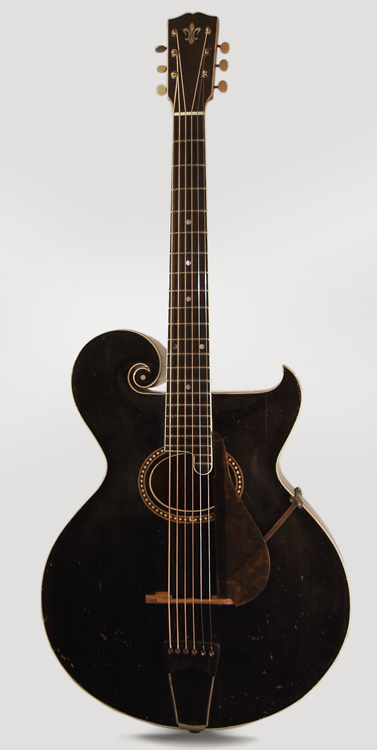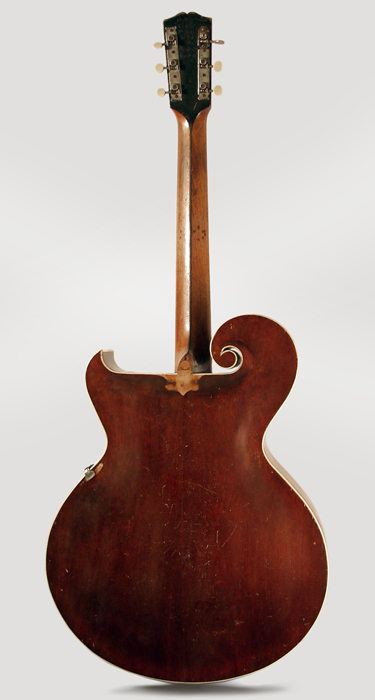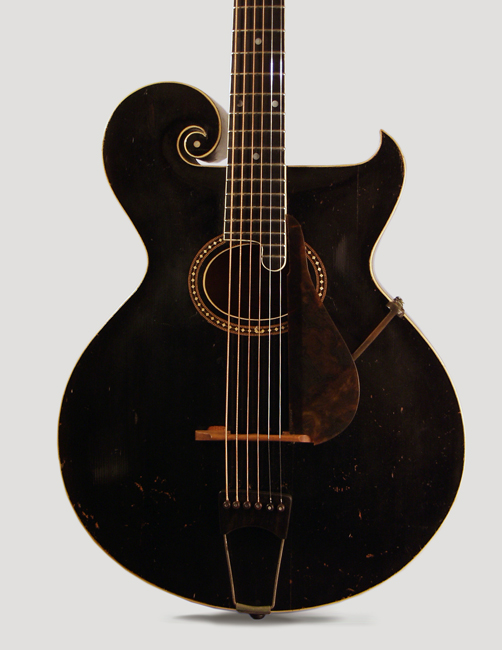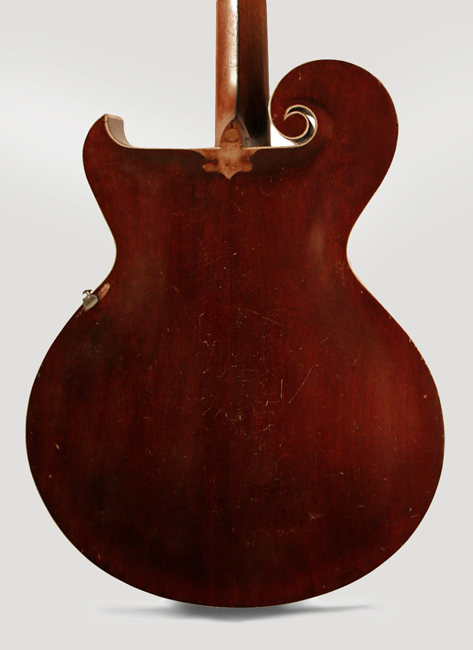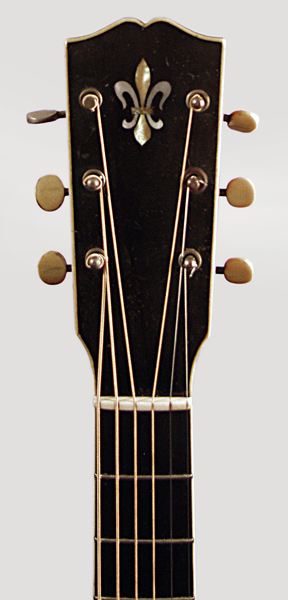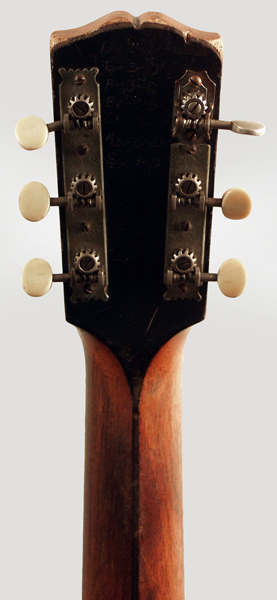Gibson Style O Artist Arch Top Acoustic Guitar (1911)
This item has been sold.
Item # 6515
Prices subject to change without notice.
Gibson Style O Artist Model Arch Top Acoustic Guitar (1911), made in Kalamazoo, Michigan, black lacquer finish, birch back and sides, spruce top; mahogany neck with ebony fingerboard.
Overall length is 38 5/8 in. (98.1 cm.), 16 1/16 in. (40.8 cm.) wide at lower bout, and 3 1/4 in. (8.3 cm.) in depth, measured at side of rim. Scale length is 24 1/2 in. (622 mm.). Width of nut is 1 3/4 in. (44 mm.). This old Style O has seen a lot of use and repair in its 100+ years but remains more original than many with much of the finish and hardware intact This is a very good playing guitar, and as always an amazing looking instrument. The neck heel shows a number of old repairs -likely due to the guitar's unusual cutaway structure the heel is always a weak point on this model. There are two visible repaired cracks, a plug through the bottom and a rather artfully spliced in area of lighter wood on the back over the heelblock. All this is solid and actually looks less intrusive than it sounds. There are two added longitudinal struts inside the body, running from the front rim to the back and connected to the sides at the waist. These do not impede the top or back, but were someone's concept for re-inforcing the overall structure of the body long ago. The work is very neat and well accomplished-actually it seems to work quite well-this guitar is in totally solid playable condition, unlike many other early Style O survivors. The guitar has been neatly refretted recently; the original celluloid tailpiece block (which has usually disintegrated by now) has been replaced with an ebony piece in the same shape. One of the tuner strips had the end cut off in the 1940's and a contemporary Kluson openback machine mounted in the D string spot-likely a local music store improvisation. The black top finish shows many small dings and chips but no major areas of loss; the back and sides are similar. The back of the neck has more substantial wear, including an area behind the sixth fret where a number of small round dings have been neatly patched. The original pickguard and bracket are intact; the carved one-piece maple bridge has been cut down somewhat from the top but is still fully functional. Overall this guitar is definitely a survivor, but still a lovely and surprisingly fun instrument to play. Overall Very Good + Condition.
Overall length is 38 5/8 in. (98.1 cm.), 16 1/16 in. (40.8 cm.) wide at lower bout, and 3 1/4 in. (8.3 cm.) in depth, measured at side of rim. Scale length is 24 1/2 in. (622 mm.). Width of nut is 1 3/4 in. (44 mm.). This old Style O has seen a lot of use and repair in its 100+ years but remains more original than many with much of the finish and hardware intact This is a very good playing guitar, and as always an amazing looking instrument. The neck heel shows a number of old repairs -likely due to the guitar's unusual cutaway structure the heel is always a weak point on this model. There are two visible repaired cracks, a plug through the bottom and a rather artfully spliced in area of lighter wood on the back over the heelblock. All this is solid and actually looks less intrusive than it sounds. There are two added longitudinal struts inside the body, running from the front rim to the back and connected to the sides at the waist. These do not impede the top or back, but were someone's concept for re-inforcing the overall structure of the body long ago. The work is very neat and well accomplished-actually it seems to work quite well-this guitar is in totally solid playable condition, unlike many other early Style O survivors. The guitar has been neatly refretted recently; the original celluloid tailpiece block (which has usually disintegrated by now) has been replaced with an ebony piece in the same shape. One of the tuner strips had the end cut off in the 1940's and a contemporary Kluson openback machine mounted in the D string spot-likely a local music store improvisation. The black top finish shows many small dings and chips but no major areas of loss; the back and sides are similar. The back of the neck has more substantial wear, including an area behind the sixth fret where a number of small round dings have been neatly patched. The original pickguard and bracket are intact; the carved one-piece maple bridge has been cut down somewhat from the top but is still fully functional. Overall this guitar is definitely a survivor, but still a lovely and surprisingly fun instrument to play. Overall Very Good + Condition.
